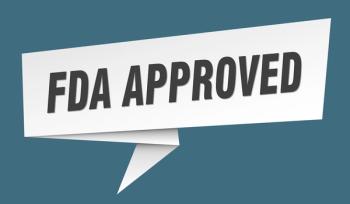
Study Summary: Vibration-Assisted Neuromuscular Rehabilitation for Children With Spinal Muscular Atrophy
Study Highlights
- Physiotherapy is an important part of the comprehensive treatment of patients with spinal muscular atrophy (SMA); however, there is a lack of data regarding the impact of physical training programs on motor outcomes in patients with SMA.
- The results of previous studies have demonstrated that whole-body vibration may potentially improve muscle function in patients with neuromuscular diseases.
- The results of this observational, retrospective study show that physiotherapy with whole-body vibration may improve motor function in pediatric patients with SMA.
Background
Spinal muscular atrophy (SMA) is an autosomal recessive neurodegenerative disease most frequently caused by deletions of survival motor neuron gene 1 (SMN1).1 SMA is characterized by muscle weakness and progressive loss of motor function; affected patients can achieve motor milestones (eg, sitting and walking) during the first years of life, but will eventually lose motor function. Types II (intermediate form) and III (juvenile, Kugelberg-Welander syndrome) are the less progressive forms of SMA. Although exon inclusion therapy (nusinersen) can increase levels of functional SMN protein and is effective at reducing motor neuron deterioration, it does not completely restore SMN protein.1
Management strategies for SMA should address deterioration of muscle strength. The results of previous studies have shown that electrical stimulation and high-resistance weight training may benefit adults with SMA. While physiotherapy is a generally accepted component of the comprehensive treatment of SMA, there is a lack of evidenced-based guidance as to the most beneficial frequency, intensity, and timing. A few studies published in 2015 evaluated endurance and resistance training in patients with SMA; however, there is an unmet need for further studies on the impact of physical training programs on motor function in these patients.1
Additionally, there is growing clinical and scientific interest in whole-body vibration, as studies have shown its potential in improving neuromuscular interactions.1 The addition of whole-body vibration to traditional rehabilitation has been associated with faster gains of muscle function. Thus, it is postulated that whole-body vibration may potentially benefit patients with SMA and may confer neuroprotection.1
In this study, investigators evaluated the impact of physical training with whole-body vibration on motor outcomes in pediatric patients with SMA.1
Study Design
This was an observational, retrospective analysis of pediatric patients participating in the German Auf die Beine physiotherapy program between March 2007 and March 2017.1 Data were collected for patients who were diagnosed with type II or III SMA who had at least 1 outcome assessment completed at 2 consecutive visits. Patients were excluded if they had diagnoses other than SMA that influenced motor function or required surgery during the study period. The rehabilitation program consisted of goal-directed training during 2 inpatient stays and a 6-month side-alternating whole-body vibration home program. Data were collected from the first inpatient stay (M0), after the 6-month program (M6), and at 12 months (M12; 6-month follow-up visit).1 Motor function outcomes were primarily assessed with the Gross Motor Function Measurement 66 (GMFM-66) or the Hammersmith Functional Mobility Scale (HFMS).1 With regard to interpreting the GMFM-66 score changes, investigators used the minimal clinically important difference criteria established for cerebral palsy. The minimum change score for a minimal clinically important difference of medium effect size was 2.05 points after 6 months; the corresponding value for large effect size was 3.28 points. With regard to HFMS, the investigators used a score change criteria of ±2 points, based on a prior study that evaluated natural history data (Mercuri et al). Mercuri et al reported that 10.2% (5 of 49) of nonambulant children younger than 5 years with SMA type II or III had changes in score between −2 and +2 after 12 months. Functional improvements and adverse events (AEs) were also assessed based on spontaneous parent reports at M0, M6, and M12.1
Results
Of the 34 children included in this study, 16 were assessed by the GMFM-66 and 18 were assessed by HFMS. Two patients in the GMFM-66 group and 7 in the HFMS group did not return for the 12-month visit or did not have an M12 measurement completed. The baseline mean age was 4.64 ± 1.95 years.1
Significant improvements were observed from M0 to M6 in both the GMFM-66 and the HFMS groups (P = .044 and .01, respectively).1 Increases in GMFM-66 score from M0 to M12 were observed; however, the increases were not statistically significant (P = .124). Individually, 6 out of 13 patients in the GMFM-66 group had score increases greater than the minimal clinically important difference of a medium effect size (2.05 points). In the HFMS group, from M0 to M12, there was a significant increase in HFMS score of 2.73 ± 1.79 points (P = .007). Individually, 72.7% of the HFMS group (8 of 11 patients) had score increases of 2 points or more at M12, which was significantly higher compared with the 10.2% reported in the Mercuri et al study (P <.001).1
The most common functional improvements reported by parents were in the areas of general stability, head control, balance, and coordination (17 events at M6, 9 events at M12; multiple events per child possible). AEs were reported by the parents of 3 children; the investigators determined that these AEs were not likely attributable to the program. Two of the 14 children in GMFM-66 group and 5 of the 11 children in the HFMS group continued training after M12.1
Conclusion
Based on these results, the authors reported that goal-oriented functional and intensive interval rehabilitation with home-based side-alternating whole-body vibration is safe in patients with types II and III SMA and may significantly improve mobility as measured by HFMS.1 However, further studies using a control group are needed to further evaluate this potential benefit and to evaluate long-term benefits.1
Reference
1. Stark C, Duran I, Cirak S, et al. Vibration-assisted home training program for children with spinal muscular atrophy. Child Neurol Open. 2018;5:2329048X18780477. doi: 10.1177/2329048X18780477.
Newsletter
Stay ahead of policy, cost, and value—subscribe to AJMC for expert insights at the intersection of clinical care and health economics.







































